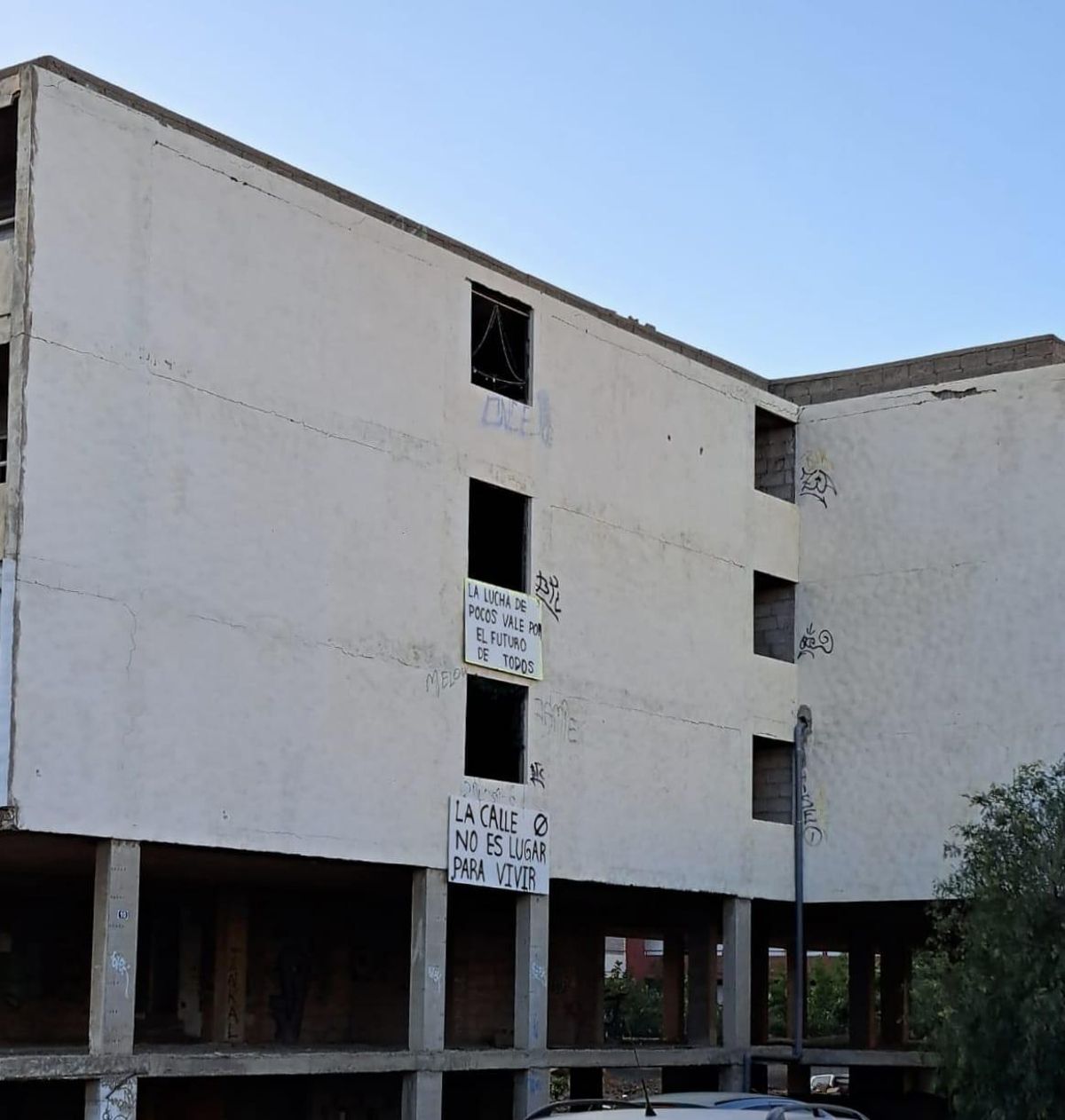The 210 people who make up the 90 families occupying the 44 homes in the Chasna building, in Costa del Silencio (Arona), will be evicted starting at 09:30 on Tuesday by decision of the Court of First Instance number 3 of Arona. The property, located at numbers 8 and 10 on Chasna Street, is affected by structural weakness (aluminosis) and the risk of collapse, as stated in the reports issued by the Municipal Urban Planning Office in 2021.
Among the members of the 90 families are elderly people (some even 80 years old), babies, minors, pregnant women, single-parent families, neighbours with disabilities, and sick individuals with various conditions. They are people of various nationalities. Although many express their willingness to leave the building, they are concerned because they lack alternative housing. A problem that the Arona City Council has also been unable to solve.
The councillor for Social Services explains that they can provide 2,000 euros in assistance, but there are no rental properties available
[–>
Ruth Martín, councillor for Social Services, states that the Government of the Canary Islands and the Cabildo offer economic assistance as an alternative for those affected to rent. The Municipal Social Services Board has 1.1 million euros for emergency assistance “and we can help neighbours with up to 2,000 euros“. In both cases, “the problem is that there are no properties available, as the market is saturated and there is no supply”.
The Chasna building is located near the border between Arona and San Miguel de Abona, on the road that leads from Costa del Silencio to Guargacho. Its construction was left unfinished “and has been abandoned for 53 years. Many things happened here for a long time, including deaths,” explains one of those affected by the eviction, Juan José López. “We are hard-working people here, a butcher, bricklayers…”.
López refers to the lack of rental properties for so many affected individuals and at affordable prices. “The cheapest one is 800 euros per month, three months’ deposit, bank guarantee, no children or pets allowed… That’s the problem.” This is further complicated by the inability to register, an issue for which the Arona municipal government is blamed.

Chasna Building, in Costa del Silencio (Arona. / EL DÍA
Water and electricity
[–>
They do not deny their status as squatters and claim that “we have rehabilitated the building. When we arrived, it was full of rubble, destroyed, and we each invested in refurbishing it so that families could live there. We supply ourselves with our water containers and solar panels”. They claim that the investment per dwelling ranges between one thousand and 3,000 euros. Juan López says that five years ago “I found a house full of rubble that I emptied, fixed, and painted… We have made it a habitable home”.
The Arona City Council received the notification from the court regarding the eviction of the 210 people on February 6. Contrary to what the affected claim, councillor Ruth Martín states that the Social Services did in fact prepare and submit the corresponding vulnerability reports in court, “however, in the case of a property for which there is an urban planning report establishing structural weakness and the risk of collapse, the court does not consider vulnerability reports because the safety of individuals takes precedence.”
The councillor describes a complex situation because “many of those affected have no income and there are no alternative resources available as they are overwhelmed, whether it’s shelters, supervised housing, or others”. Meanwhile, among the 90 families, there is also growing fear that issues with the guardianship of minors may arise given the circumstances.
A document
The residents of the Chasna building also complain that the document received from the Court of First Instance number 3 of Arona does not bear a letterhead, stamp, or signature.
A group of these residents held an authorized protest outside the Customer Care Service (SAC) offices of the Council in Los Cristianos. One of their demands is to be granted a reasonable amount of time (at least two months) to evacuate the homes and move their belongings.
“With our children, rights. With our family, you don’t play!”, “the struggle of a few is worth the future of all”, “the street is no place to live”, “you cannot ignore so many people demanding change” and “all we want is a home for our children” are slogans displayed by the residents protesting the eviction with banners on the building facades.















